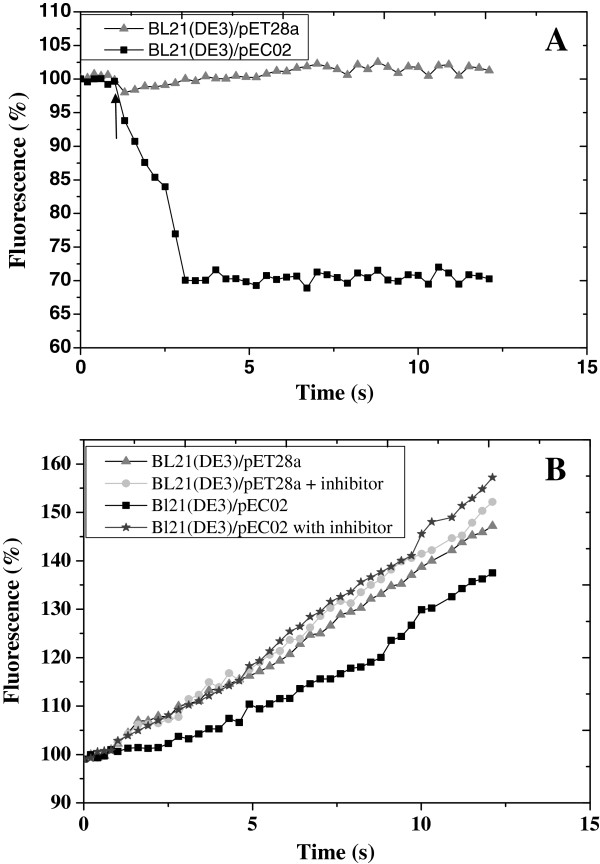Figure 5.
Ethidium bromide (EB) transport in OtrC-overexpressing cells and nonexpressing cells. A: The OtrC-expressing cells (black squares) and the control cells (gray triangles) were cultured and induced with 1 mM IPTG, and then resuspended in KPi buffer (pH 7.0) containing 5 mM MgSO4. The de-energized cells (OD600 = 0.5) were pre-equilibrated with 20 μM EB at 30°C, and 25 mM glucose was added (at the arrow) to initiate EB efflux. B: The effect of orthovanadate on the accumulation of EB in OtrC-expressing and nonexpressing cells. E.coli/pETC02 cells were cultured, induced and collected; the washed cells (OD600 = 0.5) were incubated for 10 min at 30°C in the presence (dark gray stars) or absence (black squares) of 0.5 mM orthovanadate, followed by the addition of 20 μM ethidium bromide (EB) along with 2 mM Mg-ATP (arrow). The E. coli/pET28a cells were used as the control, treated with (grey triangles) or without (light gray circles)orthovanadate as described above. The development of fluorescence of the DNA-ethidium complex in the cell suspension was monitored at 30°C every 20 s. The fluorescence intensity before the addition of glucose or ATP was normalized to 100%.

